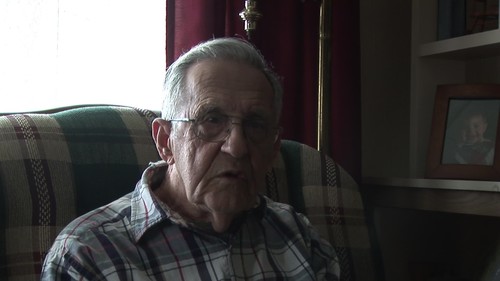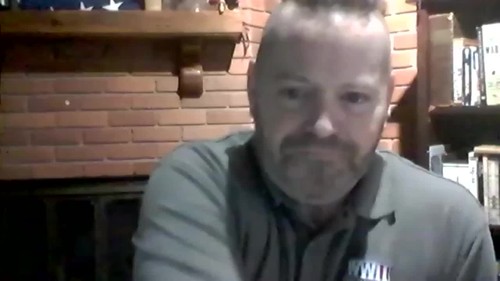Advanced Search
-
Eshbach, Robert Crossing the Rhine

Robert Eshback and the three other men of the machine gun section stood guard 24 hours a day, then they switched off.
-
Eshbach, Robert Early Life and Entrance Into Service

Robert Eshback was born in 1924 in Beckersville, Pennsylvania. He was one of two sons of a foundryman.
-
Eshbach, Robert Overseas Deployment

Robert Eshback went overseas on the USS Wakefield (AP-21), a troop transport ship that traveled alone, and he was seasick for one day, until he lea
-
Eshbach, Robert Reflections

Robert Eshback believes that the war was a good experience for a lot of men; for him, it wasn't good. It took a lot of years from him.
-
Eshbach, Robert War's End in Europe

In March [Annotator's Note: March 1945], Robert Eshback was in the Ruhr Pocket; in April his battalion [Annotator's Note: 681st Glider Fi
-
Eshbach, Robert War's End in the Pacific and Homecoming

When the division [Annotator's Note: 17th Airborne Division] broke up, Robert Eshback was sent to the 101st [Annotator's Note: 101st Airb
-
Eshelman, Raymond Closing Thoughts

Ray Eshelman did not take long to transition back to civilian life. He was looking forward to it. He did not miss the Navy at all.
-
Eshelman, Raymond Enlistment to USS LST-801

Ray Eshelman knew everybody was going to be drafted.
-
Eshelman, Raymond Into the Pacific

Ray Eshelman was in San Diego [Annotator's Note: San Diego, California] and went to Pearl Harbor [Annotator's Note: Pearl Harbor, Hawaii]
-
Eshelman, Raymond Kamikazes to Discharge

The kamikazes were day and night [Annotator's Note: during the Battle of Okinawa, code-named Operation Iceberg, 1 April to 22 June 1945, Okina
-
Eshelman, Raymond Life Aboard Ship

Ray Eshelman had been on USS LST-925 in Boston [Annotator's Note: Boston, Massachusetts, before reporting aboard USS LST-801].
-
Eshelman, Raymond Postwar Life and Career

Ray Eshelman was never interested in a military career. He had a couple of choices at discharge.

